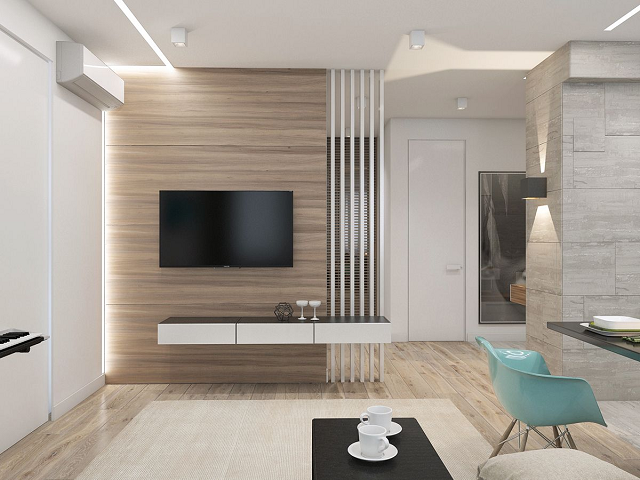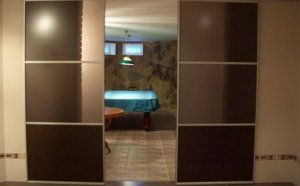
The Art of Bold Interiors: How Not to Be Afraid to Experiment with Textures by Interior Designers London
When it comes to interior design, many people hesitate to step out of their comfort zones. They stick to tried-and-true materials, afraid that too much experimentation might make their space look chaotic. However, some of the most stunning interiors come from a fearless approach to texture. Understanding how to mix and match different materials can elevate your space, giving it depth, personality, and sophistication. If you’ve ever found yourself drawn to visually rich interiors but weren’t sure how to replicate them, this guide is for you. With insights from Interior Designers London, we’ll explore how to confidently experiment with textures in your home.
Why Texture Matters in Interior Design
Texture plays a crucial role in how a space feels—not just visually, but also emotionally and physically. A room filled with flat, smooth surfaces can feel sterile and unwelcoming, while a room with too many heavily textured elements may seem overwhelming. The key is balance. By incorporating a variety of textures, you create a layered, dynamic environment that invites both visual and tactile engagement.
Interior Designers London emphasize that texture should not be an afterthought. It’s as essential as color and form in shaping an interior. Whether it’s a sleek marble countertop, a soft velvet sofa, or a rugged brick wall, every material brings its own character to a room. Learning how to blend these elements is the first step toward a more adventurous approach to interior design.
Overcoming the Fear of Experimentation
Many people shy away from experimenting with textures because they fear making mistakes. But in design, mistakes often lead to innovation. If you’re unsure where to start, consider these simple strategies:
1. Start Small
If you’re hesitant about introducing bold textures, start with small elements. Throw pillows, rugs, and curtains are great ways to experiment without making a long-term commitment. Interior Designers London often recommend using textured accessories to gauge how different materials interact before incorporating them on a larger scale.
2. Use a Neutral Base
A neutral color palette provides the perfect backdrop for mixing textures. If your walls and major furniture pieces are in muted tones, you have more freedom to play with materials like distressed wood, woven fabrics, or polished metals. This approach ensures that even bold textures remain cohesive.
3. Mix Contrasting Materials
A key principle in texture experimentation is contrast. Pair soft with hard, rough with smooth, and matte with glossy. For example, a plush velvet chair against an exposed brick wall creates a stunning juxtaposition. Interior Designers London often use this technique to add depth and intrigue to interiors.
4. Layer Different Textures
Layering is a foolproof way to incorporate multiple textures without overwhelming the space. Consider a bedroom with a linen duvet, a chunky knit throw, and a leather bench. Each element adds its own distinct texture, creating a well-balanced aesthetic.

Popular Texture Combinations
To give you more confidence in experimenting with textures, here are some classic combinations used by top Interior Designers London:
1. Wood and Metal
The warmth of wood contrasts beautifully with the coolness of metal. Whether it’s reclaimed wooden beams with industrial-style steel light fixtures or a wooden dining table with metallic chairs, this combination brings an effortless balance between rustic and modern.
2. Glass and Fabric
Glass elements, such as coffee tables or pendant lights, provide a sleek contrast to soft textiles like velvet, linen, or wool. This pairing creates a harmonious blend of delicate and cozy aesthetics.
3. Concrete and Leather
For a bold, urban look, pair raw concrete with luxurious leather. The starkness of concrete walls or flooring is softened by the richness of leather furniture, adding sophistication to industrial-style spaces.
4. Natural Fibers and Plush Fabrics
Incorporating materials like rattan, jute, or bamboo with plush fabrics such as suede or silk can create a balanced mix of organic and refined elements.
Texture in Different Rooms
How you use texture should depend on the function of the room. Interior Designers London suggest the following approaches:
Living Room
This space should feel inviting and comfortable. Combine various fabrics like wool throws, velvet cushions, and linen curtains. Add texture through decorative elements such as ceramic vases, wooden coffee tables, and woven baskets.
Bedroom
The bedroom should be a sanctuary. Layer bedding with different materials—cotton sheets, a silk duvet, and a faux fur throw. Upholstered headboards and area rugs enhance the sense of coziness.
Kitchen
Since kitchens have many hard surfaces, balance them with softer textures. Wooden cabinetry, stone countertops, and woven bar stools add warmth to an otherwise sleek space. Interior Designers London often incorporate open shelving with textured dishware for added interest.
Bathroom
Bathrooms can feel cold with too many smooth surfaces. Introduce texture through natural stone tiles, wooden vanities, and woven baskets. A plush bath mat and soft towels also contribute to the sensory experience.
Bringing It All Together: A Case Study
Let’s look at an example of how Interior Designers London transformed a dull apartment into a textured masterpiece.
The Challenge:
A small, minimalist apartment lacked depth and personality. The client wanted a cozy, sophisticated space but was afraid of overwhelming it with too many elements.
The Solution:
- Walls: A combination of matte paint and a single textured wallpaper accent wall.
- Furniture: A mix of leather and fabric seating to add contrast.
- Decor: A blend of metal and wooden accessories, including a brass-framed mirror and reclaimed wood shelving.
- Textiles: Layered rugs, a velvet throw, and linen drapes to soften the look.
The result was a visually rich yet harmonious space that felt warm, inviting, and dynamic.
Fear of experimentation holds many people back from achieving truly stunning interiors. By embracing texture, you can transform any space from flat and uninspired to lively and sophisticated. Remember to start small, play with contrasts, and layer materials for depth.
Interior Designers London have mastered the art of texture, proving that bold design choices can lead to incredible results. Whether you want to make subtle changes or embark on a complete renovation, don’t be afraid to explore the endless possibilities texture has to offer. The more you experiment, the more confident you’ll become in creating a space that is uniquely yours.
Share this Post
Related posts
Purchase In The Corridor Of Photo Design
There are many design moments that will help to accommodate the necessary things. A great option is a closet, which will…
Read MoreCarbon In The Closet
Today, a lot of people prefer to buy a cupboard in Catherineburg. The popularity of this type of furniture is due to the…
Read More









